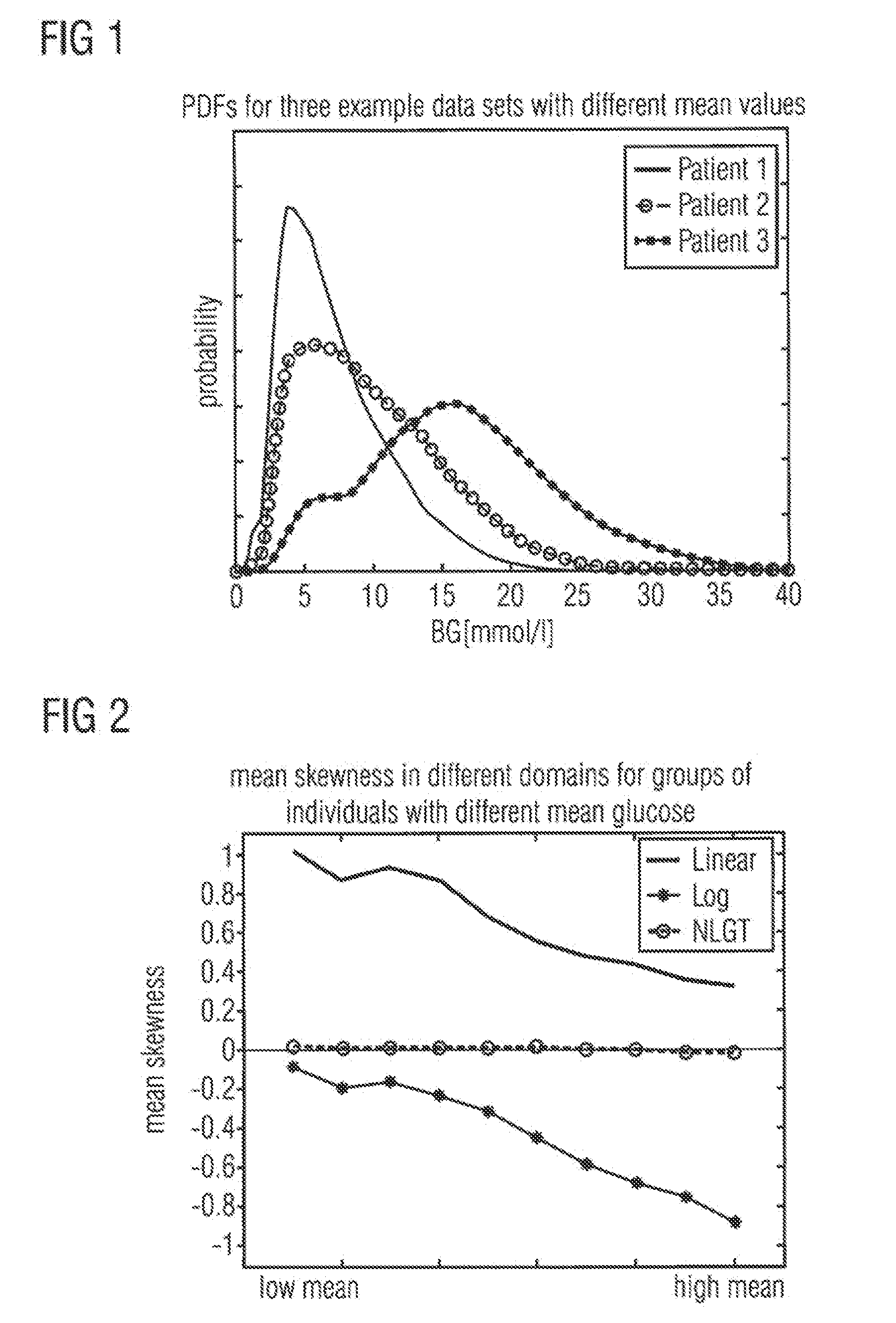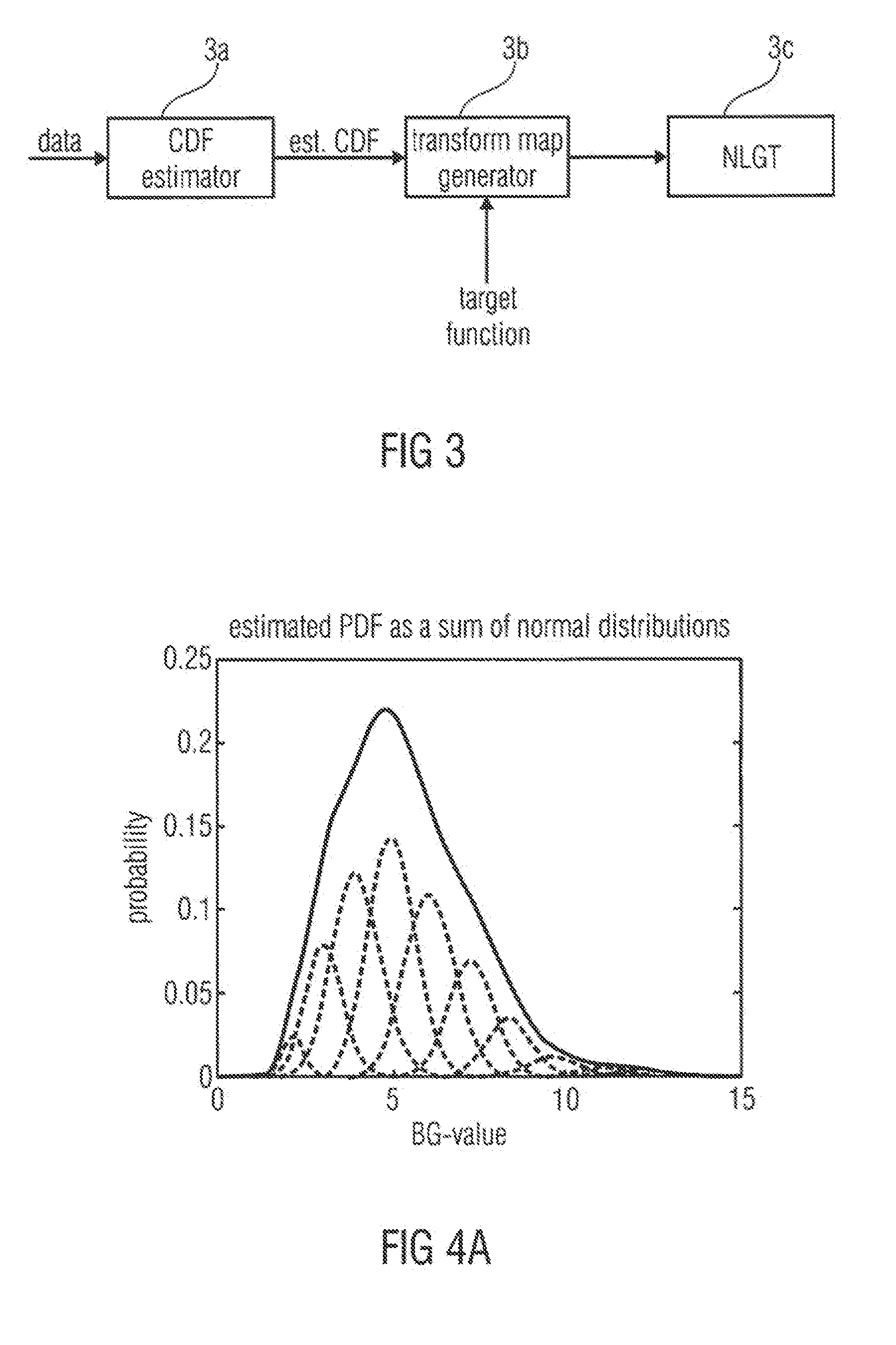Apparatus and method for generating a condition indication
a condition indication and apparatus technology, applied in the field of medical instruments and systems for monitoring, displaying, controlling and interpreting, can solve the problems of increasing the risk of diabetic micro- and macrovascular complications, increasing the risk of long-term complications, and affecting the accuracy so as to improve the quality of diagnosis and treatment, improve the effect of observation, interpretation and decision-making
- Summary
- Abstract
- Description
- Claims
- Application Information
AI Technical Summary
Benefits of technology
Problems solved by technology
Method used
Image
Examples
Embodiment Construction
[0096]It is to be noted that the above and subsequently described aspects can be used in combination or separately from each other. Furthermore, the other different features of the invention related to the CDF smoothing, target function, generating the transform map / transform function, transforming data, universal transform for a collection of data sets, a simplified universal transform for a collection of data sets, a graphical interpretation, predictive alarms and glucose dynamics interpretation, estimation of central tendency, estimation of variability, or artificial pancreas can be used in combination or separately from each other, i.e. as alternatives, in accordance with the present invention.
[0097]FIG. 1 illustrates PDFs for three example patients with different glucose mean values.
[0098]FIG. 2 illustrates a mean skewness for glucose data sets with different glucose mean values. The diagram is based on 520 data sets from the well-known DCCT study. The skewness has been calcula...
PUM
 Login to View More
Login to View More Abstract
Description
Claims
Application Information
 Login to View More
Login to View More - R&D
- Intellectual Property
- Life Sciences
- Materials
- Tech Scout
- Unparalleled Data Quality
- Higher Quality Content
- 60% Fewer Hallucinations
Browse by: Latest US Patents, China's latest patents, Technical Efficacy Thesaurus, Application Domain, Technology Topic, Popular Technical Reports.
© 2025 PatSnap. All rights reserved.Legal|Privacy policy|Modern Slavery Act Transparency Statement|Sitemap|About US| Contact US: help@patsnap.com



